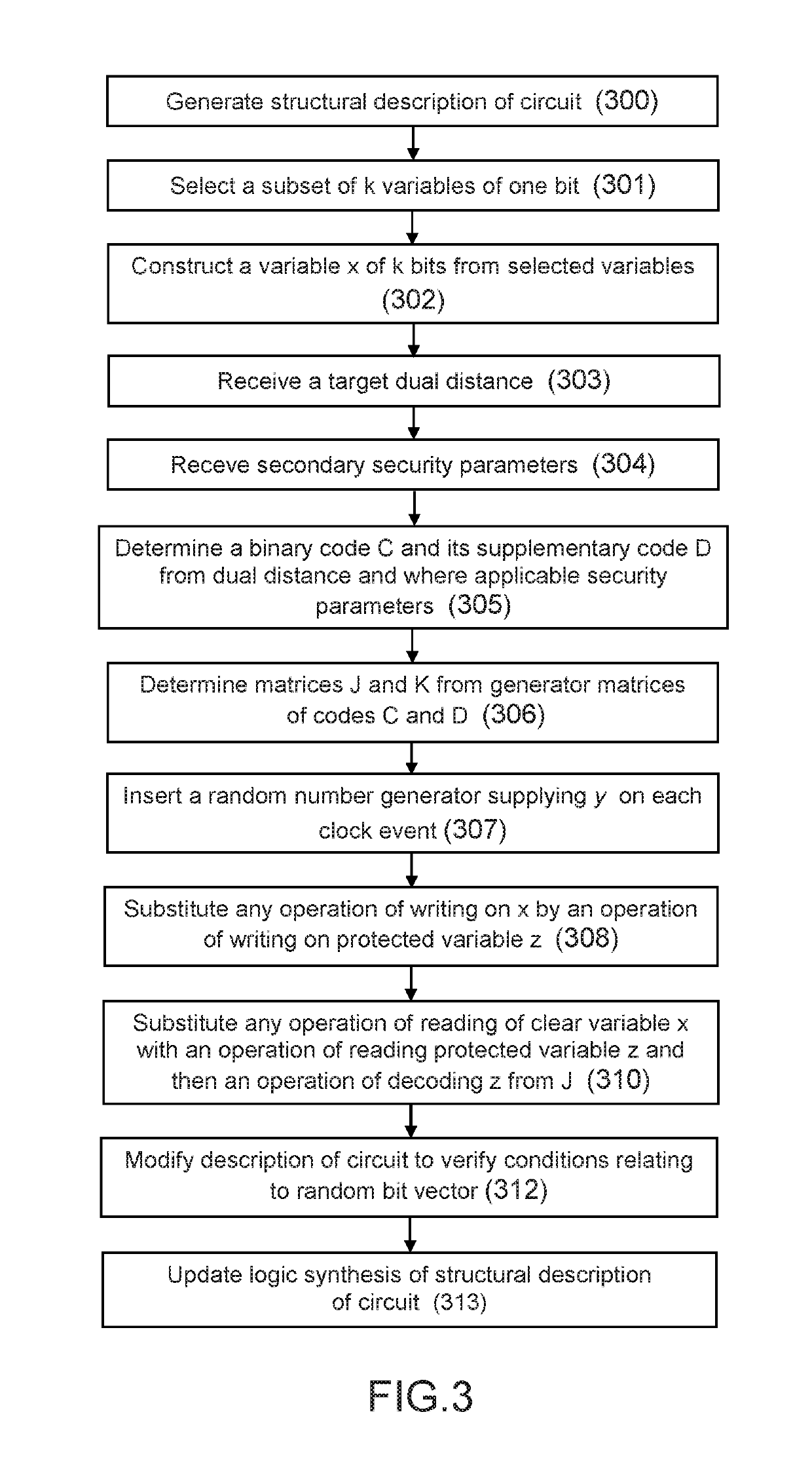Circuit protection system and method
a circuit protection and circuit technology, applied in the field of electronic circuits, can solve the problems of difficult to choose a particular foundry, and complicated processes for electronic components
- Summary
- Abstract
- Description
- Claims
- Application Information
AI Technical Summary
Benefits of technology
Problems solved by technology
Method used
Image
Examples
first embodiment
[0173]In a first embodiment, it is possible to use the code D in place of the code E to code the variable y (while the supplementary code F of the code E is equal to the binary code C), which yields y′=yH, the fault detector carrying out the tests zK=y′K and y′J=0. The minimum Hamming weight cost of a non-detectable attack is then equal to min(dC, dD). In the case where the faults on the coded variables z and y′ are uniformly distributed, the probability of detection becomes:
[0174]2dim(𝔽2n)-12dim(𝔽2n).
second embodiment
[0175]Alternatively, in a second embodiment, the code E may be made equal to the binary code C while the supplementary code F of the code E is equal to the supplementary code D of the code C, the variable y of (n−k) bits being transformed into a variable yk of n bits and the encoded variable y′ being of size n and equal to ykH.
[0176]In particular, if n−k≤k, it is possible to construct a vector yk of size k on the basis of the variable y of size n−k, for example by concatenating y with constant or random data. It is then possible to code yk with the code C in place of the code E. The coded variable y′ then becomes y′=ykG=(y↑k)G where the operator ↑k designates the operation consisting in increasing the size of the vector up to k, for example by data padding. The fault detector 12 then performs a first test zK=(y′J) ↓n-k in which the operator ↓n-k designates the operation of selecting the n−k bits corresponding to y in yk. The fault detector 12 carries out the second test y′K=0.
[0177]...
PUM
 Login to View More
Login to View More Abstract
Description
Claims
Application Information
 Login to View More
Login to View More - R&D
- Intellectual Property
- Life Sciences
- Materials
- Tech Scout
- Unparalleled Data Quality
- Higher Quality Content
- 60% Fewer Hallucinations
Browse by: Latest US Patents, China's latest patents, Technical Efficacy Thesaurus, Application Domain, Technology Topic, Popular Technical Reports.
© 2025 PatSnap. All rights reserved.Legal|Privacy policy|Modern Slavery Act Transparency Statement|Sitemap|About US| Contact US: help@patsnap.com



